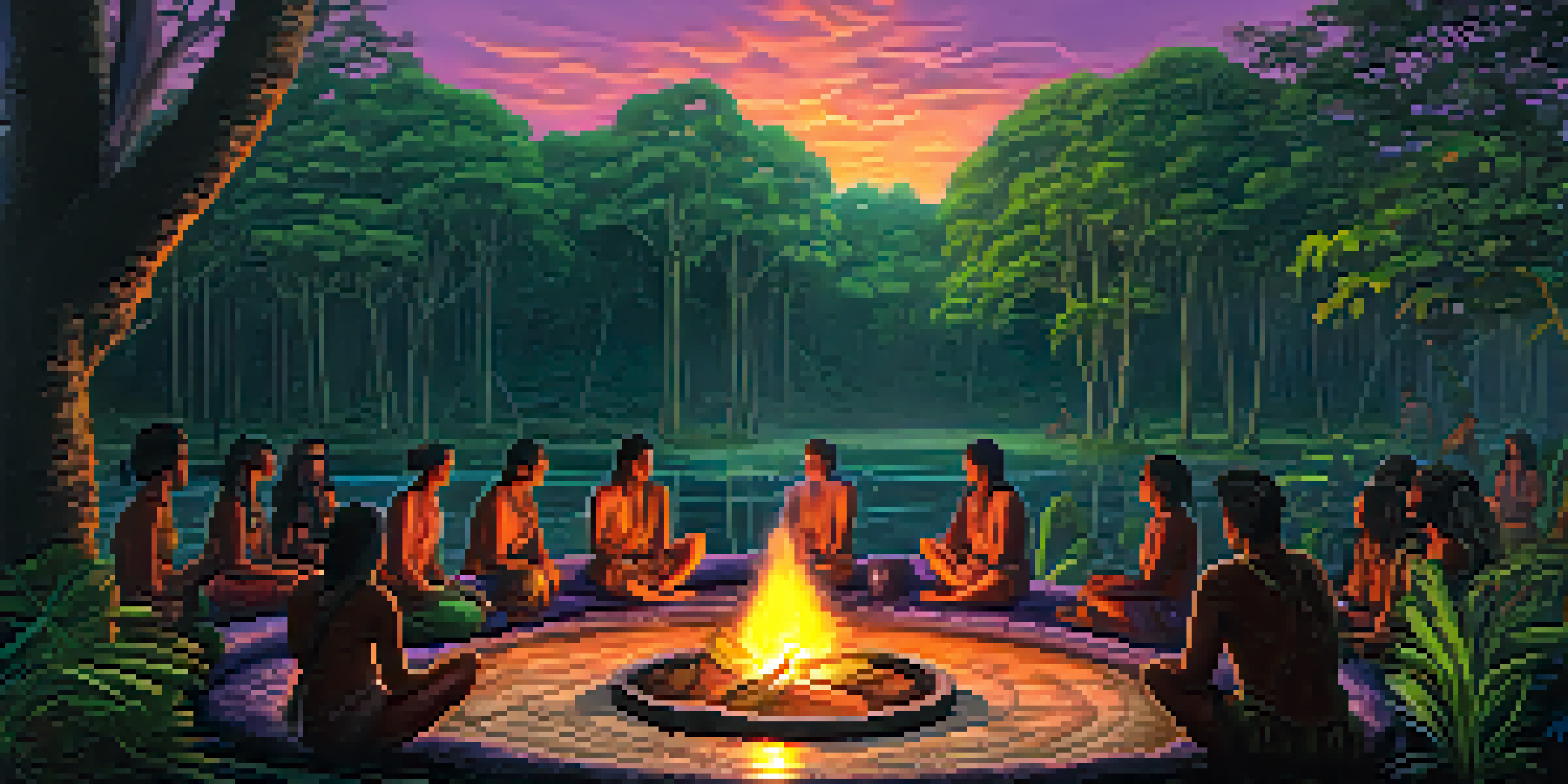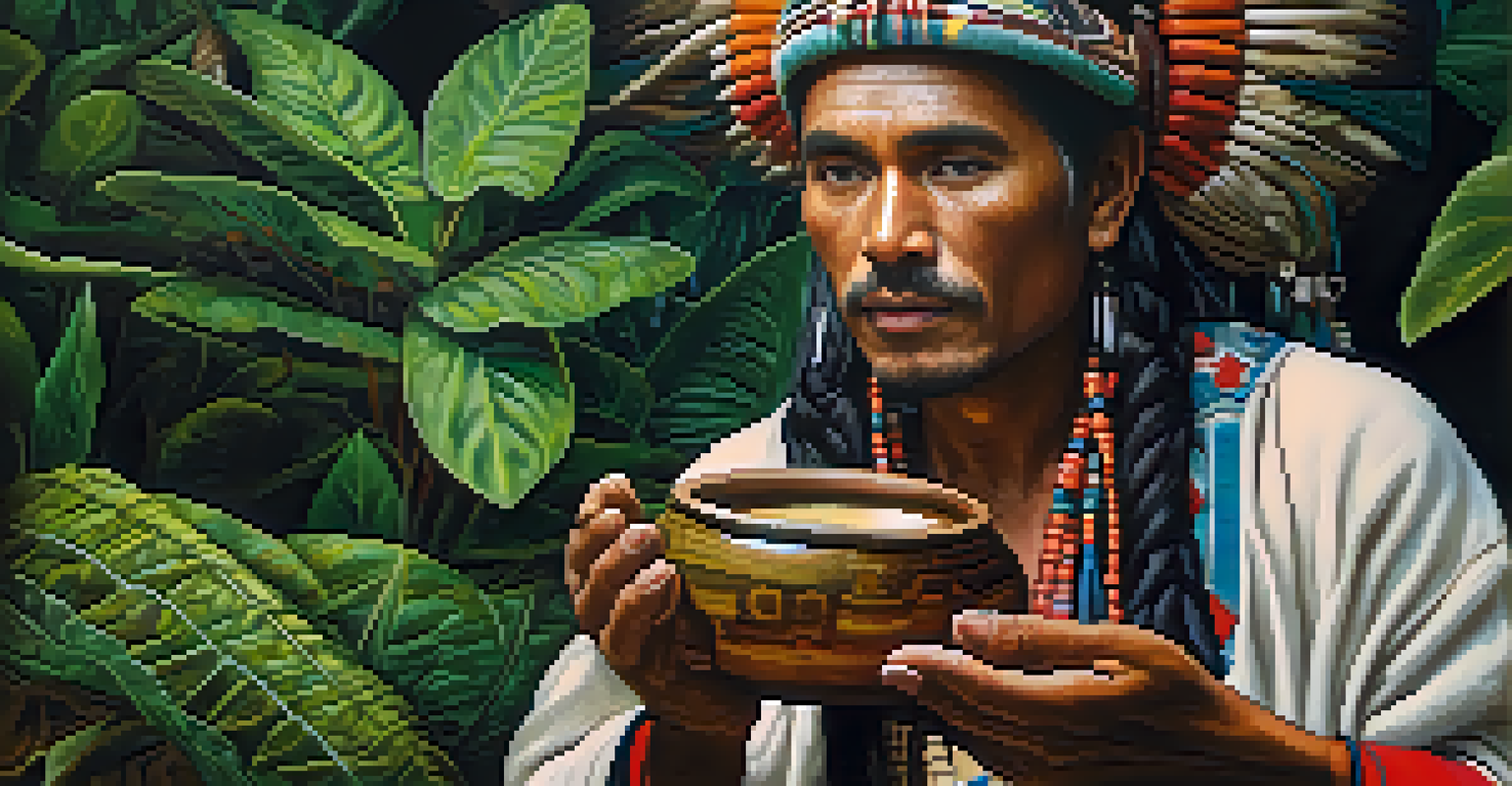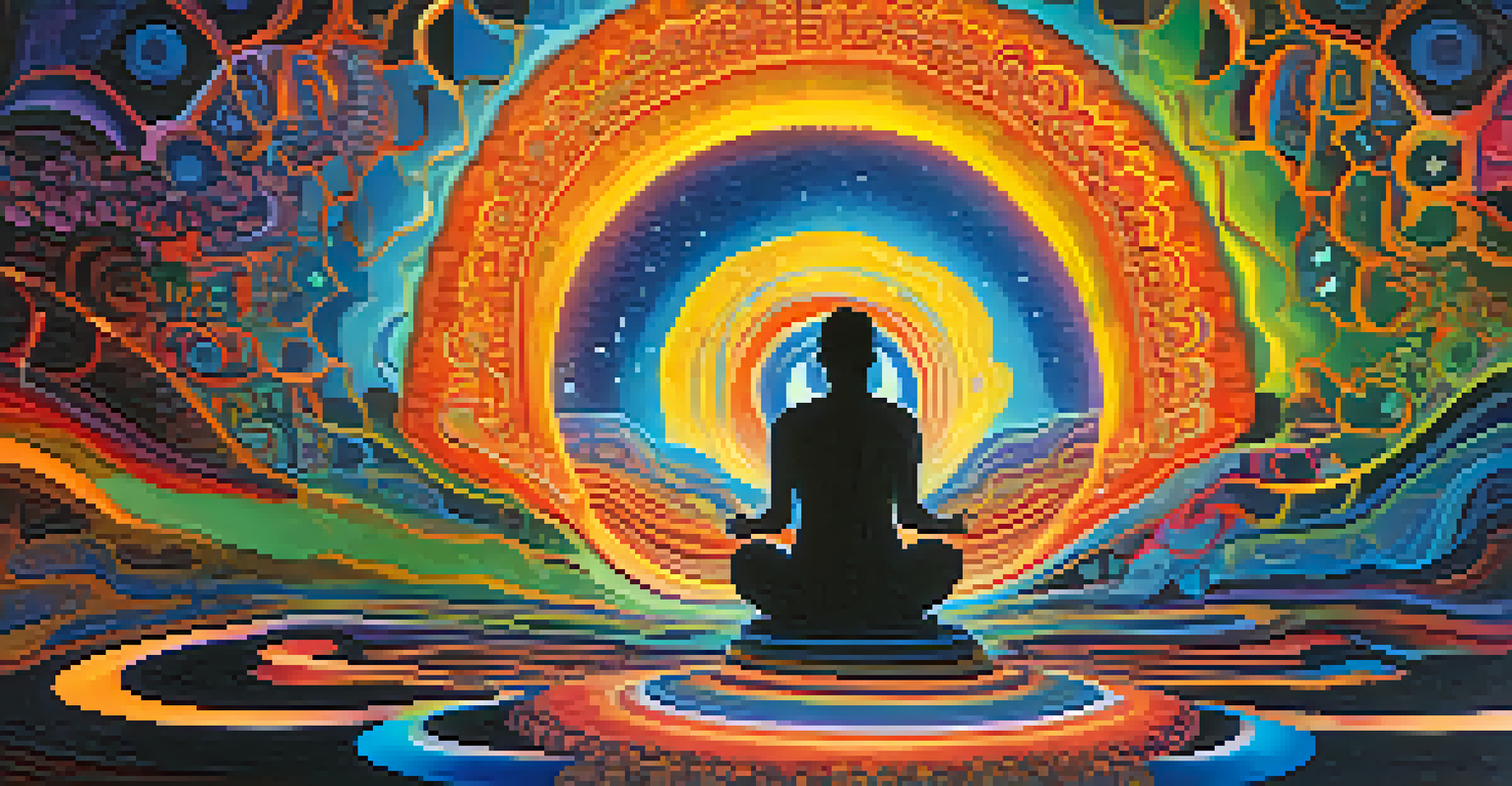The Intersection of Ayahuasca and Shamanic Traditions

Understanding Ayahuasca: A Brief Overview
Ayahuasca is a powerful plant-based brew originating from the Amazon rainforest, traditionally used in spiritual ceremonies. Made from the Banisteriopsis caapi vine and the leaves of the Psychotria viridis plant, it contains the psychoactive compound DMT. This brew has gained popularity in recent years for its potential therapeutic effects, drawing attention from both spiritual seekers and mental health professionals alike.
The medicine of the mind is the key to healing the heart.
In shamanic traditions, Ayahuasca is not just about the psychedelic experience; it’s a gateway to deeper understanding and healing. Shamans, or traditional healers, guide participants through the experience, often referred to as an 'ayahuasca ceremony.' These ceremonies can serve various purposes, from personal growth to community healing, highlighting the communal aspect of this ancient practice.
The journey with Ayahuasca can be intense and profoundly transformative, often leading individuals to confront their fears or unresolved issues. Many describe the experience as a deep dive into their psyche, revealing insights that can lead to lasting change. This blend of spirituality and psychology underscores the importance of a supportive shamanic guide during the process.
The Role of Shamans in Ayahuasca Ceremonies
Shamans play a crucial role in the Ayahuasca experience, acting as facilitators and protectors during the ceremony. They are often seen as spiritual leaders, possessing deep knowledge of the plants and the spiritual realms they navigate. Their guidance is essential, as they prepare the space and participants for the potentially intense journey ahead.

During the ceremony, shamans use specific chants, known as 'icaros,' to invoke healing and connect with the spirits. These songs are believed to carry the energy of the plant medicine and help participants navigate their experiences. The shaman's role is not just to supervise but to actively participate in the healing process, ensuring that everyone feels safe and supported.
Ayahuasca's Cultural Roots
Ayahuasca is a sacred medicine in Indigenous Amazonian cultures, used for healing and connecting with the spiritual world.
The relationship between the shaman and the participants is built on trust, as the journey can bring up vulnerability and emotional challenges. This bond allows for a more profound healing experience, where participants can feel guided and understood. Thus, the presence of a skilled shaman is invaluable in the Ayahuasca journey.
Cultural Significance of Ayahuasca in Indigenous Communities
In many Indigenous cultures of the Amazon, Ayahuasca is deeply embedded in their spiritual and cultural practices. It’s viewed as a sacred medicine, used not only for healing but also for connecting with ancestors and the spiritual world. This cultural significance adds layers of meaning to the experience, making it much more than just a psychedelic trip.
In the journey of life, we are not alone; we walk together in the spirit of community.
For these communities, Ayahuasca is a tool for maintaining harmony within the group and with nature. It's employed in rituals that address community issues, fostering unity and understanding among participants. The collective aspect of Ayahuasca ceremonies highlights how these practices are rooted in a sense of belonging and shared purpose.
The traditional knowledge surrounding Ayahuasca is passed down through generations, often through oral storytelling and direct experience. This preservation of knowledge is crucial, as it maintains the integrity and authenticity of the practice. Understanding these cultural contexts is essential for those seeking to engage with Ayahuasca respectfully.
Modern Adaptations of Ayahuasca Use
As Ayahuasca gains popularity in the Western world, its use has evolved beyond traditional settings. Many people now seek out Ayahuasca retreats or workshops that cater to a global audience. While these modern adaptations can offer valuable experiences, they often raise questions about authenticity and cultural appropriation.
Some facilitators strive to honor the traditional practices while adapting them to suit a diverse group of participants. This can include creating a safe space for sharing experiences, integrating psychological support, and emphasizing aftercare. However, finding the right balance between tradition and modernity can be challenging.
Role of Shamans in Healing
Shamans facilitate Ayahuasca ceremonies, providing essential guidance and support to participants during their transformative journeys.
The rise of online resources and communities has also contributed to the popularity of Ayahuasca, creating opportunities for people to share their stories and insights. This interconnectedness allows individuals to learn from one another, fostering a global dialogue about the benefits and challenges of Ayahuasca use. Yet, it’s essential to approach these experiences with respect and awareness of their origins.
Potential Benefits of Ayahuasca Journeys
Many participants report profound personal insights and emotional healing following their Ayahuasca experiences. These journeys can lead to breakthroughs in understanding oneself, addressing trauma, and fostering a sense of connection to others and the universe. The therapeutic potential of Ayahuasca has garnered interest from psychologists and mental health professionals.
Research suggests that Ayahuasca may help alleviate symptoms of depression, anxiety, and PTSD, providing a new avenue for healing. The plant's psychoactive properties can facilitate deep introspection, allowing individuals to confront and process difficult emotions. However, it’s important to remember that experiences can vary widely from person to person.
Beyond individual benefits, Ayahuasca can foster a sense of community among participants. Sharing these transformative experiences often leads to lasting bonds and support networks, which can be incredibly valuable in the healing process. This communal aspect underscores the importance of engaging with Ayahuasca in a respectful and mindful manner.
Challenges and Risks of Ayahuasca Use
While Ayahuasca can offer transformative experiences, it’s not without risks and challenges. The intense psychological effects can be overwhelming for some individuals, leading to anxiety or emotional distress during the ceremony. This highlights the importance of proper preparation and having a qualified shaman to guide the process.
Moreover, there are potential physical risks associated with Ayahuasca, especially for those with pre-existing health conditions or those taking certain medications. It’s crucial for participants to disclose their medical history and consult with healthcare professionals before engaging in an Ayahuasca ceremony. This precaution helps ensure safety during the experience.
Benefits and Risks of Ayahuasca
While Ayahuasca can lead to profound personal insights and emotional healing, it also carries potential psychological and physical risks.
The commercialization of Ayahuasca retreats can also pose ethical dilemmas, as some facilitators may prioritize profit over participant well-being. This underscores the need for individuals to research and choose reputable retreats that uphold the integrity of traditional practices. Awareness and education are vital to navigating the complexities of Ayahuasca use.
The Future of Ayahuasca and Shamanic Practices
As interest in Ayahuasca continues to grow, the future of its use within shamanic traditions remains a topic of discussion. There’s a delicate balance between preserving the authenticity of these practices and adapting to modern needs. Finding this equilibrium is essential to ensure that the rich cultural heritage surrounding Ayahuasca is respected.
Ongoing dialogue among Indigenous communities, researchers, and participants can help shape the future of Ayahuasca practices. Collaborative efforts can lead to a better understanding of how to integrate traditional knowledge with contemporary healing methods. This partnership can strengthen both the cultural significance of Ayahuasca and its potential benefits.

Ultimately, the future of Ayahuasca lies in its ability to foster genuine connections—among participants, with nature, and with the spiritual realm. As long as respect and awareness guide the journey, Ayahuasca can continue to play a vital role in personal and collective healing.